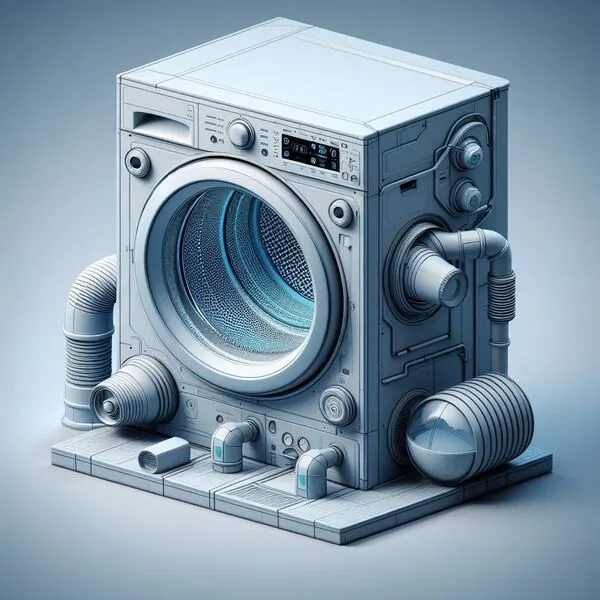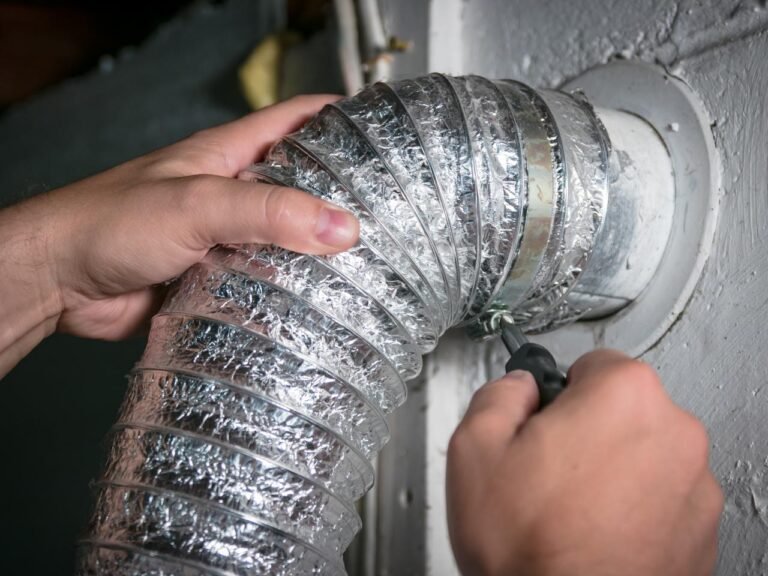Gas Dryer Venting Options: Types, Factors and Tips
Introduction
Proper gas dryer venting is crucial for ensuring the safety and efficiency of your home. The primary purpose of a dryer vent is to expel hot air, moisture, and lint outside. Failure to vent a gas dryer adequately can lead to various risks, including fire hazards and the potential for carbon monoxide poisoning. This outline will explore different gas dryer venting options, their characteristics, and factors to consider when making a choice.
what are the Gas Dryer Venting Options?
Gas dryer venting options include various types of ducts, each with its own characteristics and suitability for different situations:
- Rigid Metal Duct
- Semi-Rigid Aluminum Duct
- Spiral-Wound Aluminum Flex Duct
- Plastic Vent
- Slim Duct
what are the Types of Gas Dryer Vents?
1. Rigid Metal Duct
- Description: Considered the safest and most efficient option, rigid metal ducts are typically made of galvanized steel or aluminum.
- Installation: Requires professional installation due to its rigidity.
- Example:

2. Semi-Rigid Aluminum Duct
- Description: More flexible than rigid metal duct, easier to install, but not as durable.
- Use Cases: Suitable for shorter vent runs.
- Example:

3. Spiral-Wound Aluminum Flex Duct
- Description: The most commonly used type of dryer vent, affordable, and easy to install.
- Concerns: Uneven interior can trap lint, posing fire hazards.
- Example:

4. Plastic Vent
- Description: Inexpensive but less durable, not recommended for long vent runs or high temperatures.
- Considerations: Not suitable for all situations.
- Example:

5. Slim Duct
- Description: Designed to be less bulky than traditional ducts, suitable for tight spaces.
- Drawbacks: More expensive than other types of ducts.
- Example:

what are the Factors to Consider When Choosing a Gas Dryer Vent?
- Length of the Vent Run: Longer vent runs require more robust materials like rigid metal duct.
- Number of Elbows: Minimize the number of elbows to reduce airflow resistance.
- Local Building Codes: Adhere to local building codes, which may restrict certain types of dryer vents.
what are the Installation Tips?
- Ensure airtight connections to prevent leaks.
- Keep the vent run as short as possible.
- Avoid sharp bends in the ductwork.
- Regularly clean the lint trap.
- Schedule professional inspections and cleanings every two years.

faq gas dryer venting options
Does a gas dryer need a special vent?
Gas dryers do require a special vent to ensure proper safety and efficiency. It is recommended to use vents specifically designed for gas appliances, such as rigid metal ducts, to minimize the risk of leaks and ensure effective venting.
Can you use flexible duct for a gas dryer vent?
While flexible ducts, such as semi-rigid or spiral-wound aluminum, are commonly used for dryer vents, it’s crucial to adhere to safety guidelines. When dealing with gas dryers, it is generally recommended to use rigid metal ducts due to their durability and ability to withstand the heat generated by gas appliances.
What is the alternative way to vent a dryer?
An alternative way to vent a dryer is to use a ventless dryer. Ventless dryers utilize technology to condense moisture within the drum, eliminating the need for an external vent. This can be a practical solution in spaces where traditional venting is challenging or not possible.
How do you vent a gas dryer outside?
Venting a gas dryer outside involves installing a proper venting system. This typically includes connecting the dryer to a vent cap that directs the exhaust outdoors. Rigid metal ducts are often recommended for gas dryers, and it’s essential to follow the manufacturer’s guidelines for installation to ensure safety and efficiency. Regular inspections and cleanings are also important to prevent lint buildup and maintain proper ventilation.
Dryer Vent Cleaning
If you’re wondering how to maintain the efficiency and safety of your dryer, regular cleaning of the dryer vent is essential. Over time, lint and debris can accumulate in the vent, hindering proper airflow and potentially posing a fire hazard. To guide you through this important maintenance task, Appliances Solved offers a comprehensive guide on how to clean your dryer vent. Following these steps not only improves the performance of your dryer but also ensures the safety of your home. Don’t overlook this crucial aspect of dryer maintenance; visit the provided link for detailed instructions on keeping your dryer vent clean and functioning optimally.
Additional Resources
- National Fire Protection Association (NFPA): For comprehensive information on dryer safety.
- International Code Council (ICC): Explore local building codes related to dryer vents.

Conclusion
Proper gas dryer venting is essential for both safety and efficiency in your home. Choose the right type of vent based on your specific needs, follow manufacturer’s instructions during installation, and commit to regular inspections and cleanings to prevent potential problems. Your diligence in maintaining a well-functioning gas dryer vent contributes to the overall safety of your household.







